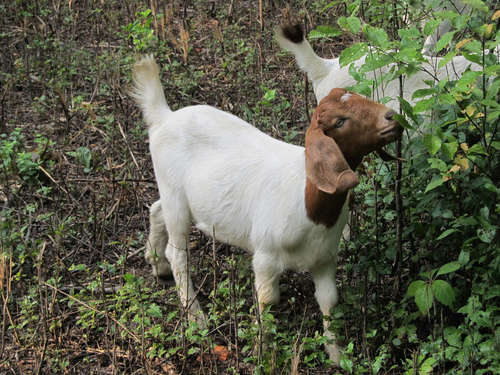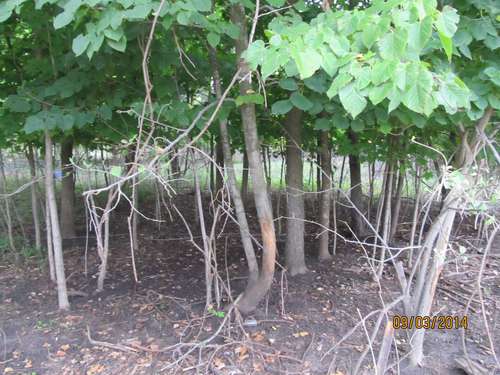Theyre Baaaaack!

Young goats can be the best browsers, as they are growing rapidly and need to eat a lot.
Photo: Karen Schik/FMR
A few years back, FMR helped the Minnesota Department of Natural Resources (DNR) to purchase a 300-acre addition to Gores Wildlife Management Area (WMA), just east of downtown Hastings. This WMA is within the Vermillion River Bottoms, which contains some of the largest floodplain expanse in the state, and is one of the top four sites for rare birds. Portions of the newly purchased WMA unit, however, were choked with buckthorn very dense, very large shrubs that almost entirely obscured the trees and prevented growth of most other vegetation in the shrub and ground layers. In partnership with the DNR, FMR wrote a natural resource management plan for the site and began to manage it in 2010.
The first task was a massive buckthorn removal effort, which transformed the appearance of the site to be similar to the savanna it once was. However, new buckthorn plants rapidly returned and have been difficult to control ever since. Fuels (i.e. dead plants) were inadequate for conducting prescribed burns and repeated herbicides were only partially successful. In an effort to find alternatives to chemical use, FMR hired a goat farmer, Goat Peak Ranch, in August 2013 who brought 80 goats to the site. Using goats for brush control is a fairly new tactic in this area, but the goats quickly showed their worth by denuding all of the shrubs below four feet, and the area remained bare for the rest of the fall.

After 2 weeks, the goats have consumed all greenery from about 4 feet down to the ground.
Photo: Karen Schik/FMR
As expected, the shrubs did re-sprout in spring 2014, but there were clearly areas where the buckthorn was greatly reduced, especially in deeper shade. Using goats for buckthorn control depends on repeated applications and FMR planned to have the goats return in the spring. Unfortunately, the goat farmer had unexpectedly moved away and FMR could find no local replacements. Since the goats need to be checked daily, the farmer needs to be located nearby. Fortunately, Wetland Habitat Restorations, the contractor FMR hired to do other ecological management tasks at the site, decided to fill the need and venture into the goat business. In mid-August they brought 30 goats to the site. Within just two weeks, large areas were again denuded.
Goats are not suitable for every site for one thing they do eat ALL plants so they cannot be used at sites that have very desirable native species. But it seems they can be a valuable and cost-effective tool to help restore the balance and diversity of vegetation in native plant communities. We will continue to monitor this site and expect to have the goats back at this site in spring or summer of 2015. Funding for the current project work at this site is provided by the Lessard-Sams Outdoor Heritage Fund, through the Metro Big Rivers Partnership.